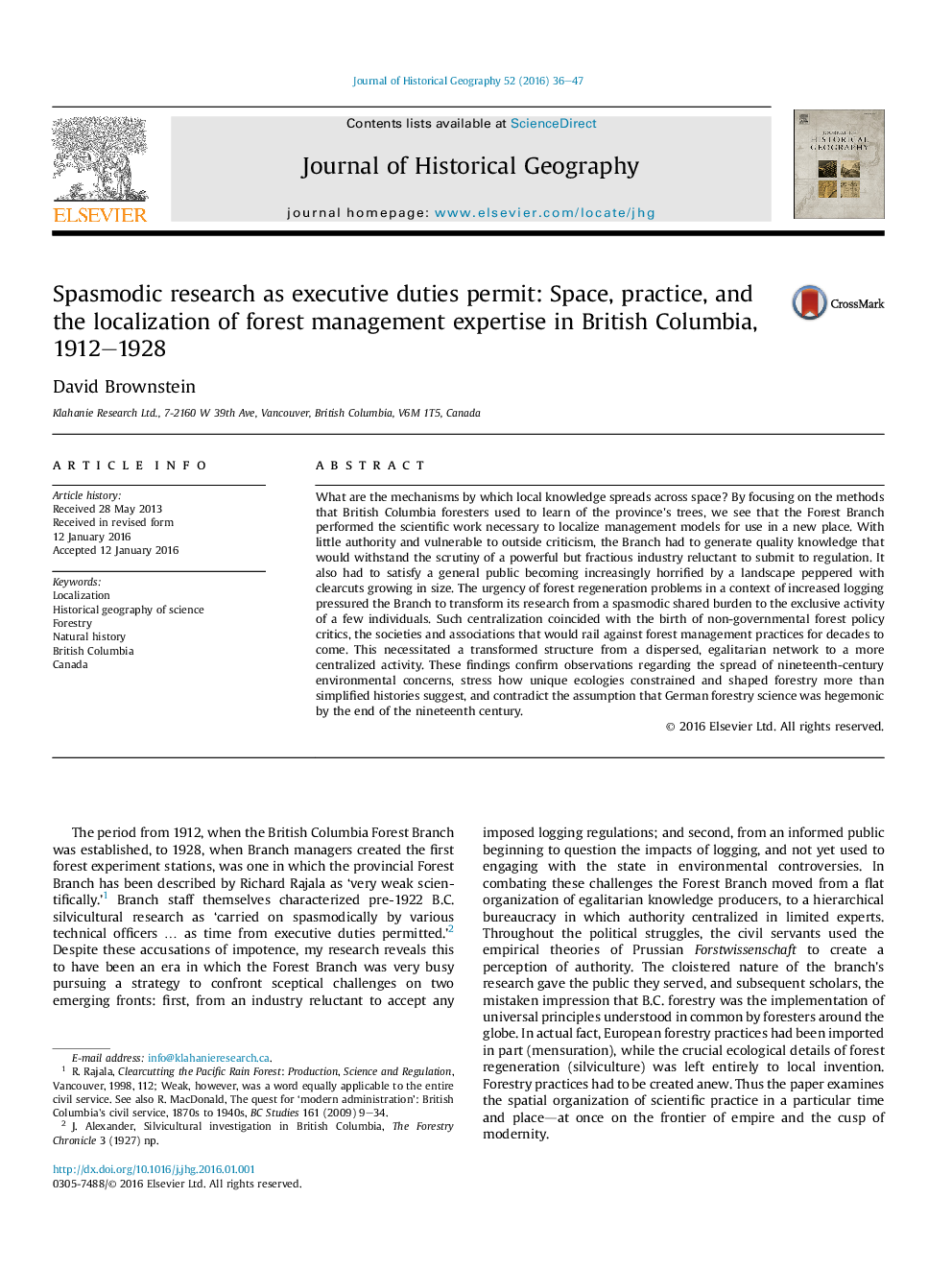| کد مقاله | کد نشریه | سال انتشار | مقاله انگلیسی | نسخه تمام متن |
|---|---|---|---|---|
| 1038927 | 1483973 | 2016 | 12 صفحه PDF | دانلود رایگان |
• What are the mechanisms by which local knowledge spreads across space?
• The B.C. Forest Branch localized management models for use in a new place.
• The Forest Branch strove for credibility within a sceptical context.
• These conflicts represent the genesis of 20th century environmental controversies.
• The B.C. Forest Branch's egalitarian network was replaced by a centralized structure.
What are the mechanisms by which local knowledge spreads across space? By focusing on the methods that British Columbia foresters used to learn of the province's trees, we see that the Forest Branch performed the scientific work necessary to localize management models for use in a new place. With little authority and vulnerable to outside criticism, the Branch had to generate quality knowledge that would withstand the scrutiny of a powerful but fractious industry reluctant to submit to regulation. It also had to satisfy a general public becoming increasingly horrified by a landscape peppered with clearcuts growing in size. The urgency of forest regeneration problems in a context of increased logging pressured the Branch to transform its research from a spasmodic shared burden to the exclusive activity of a few individuals. Such centralization coincided with the birth of non-governmental forest policy critics, the societies and associations that would rail against forest management practices for decades to come. This necessitated a transformed structure from a dispersed, egalitarian network to a more centralized activity. These findings confirm observations regarding the spread of nineteenth-century environmental concerns, stress how unique ecologies constrained and shaped forestry more than simplified histories suggest, and contradict the assumption that German forestry science was hegemonic by the end of the nineteenth century.
Journal: Journal of Historical Geography - Volume 52, April 2016, Pages 36–47
